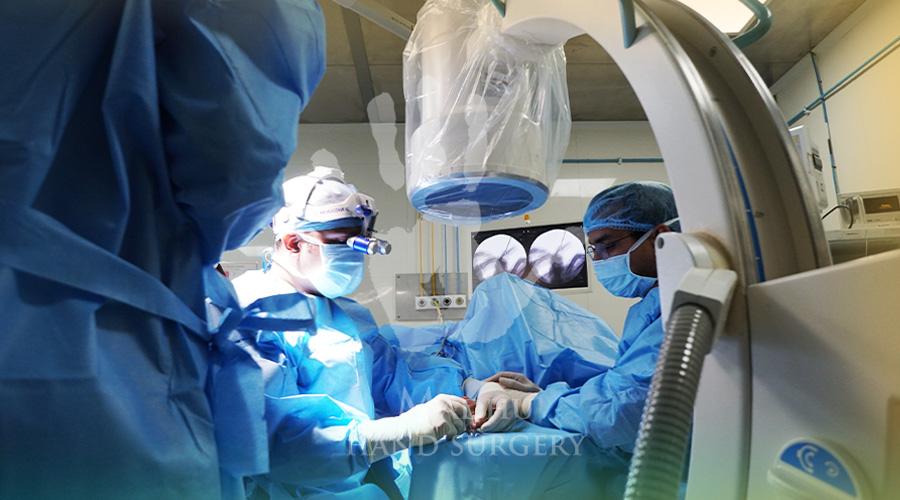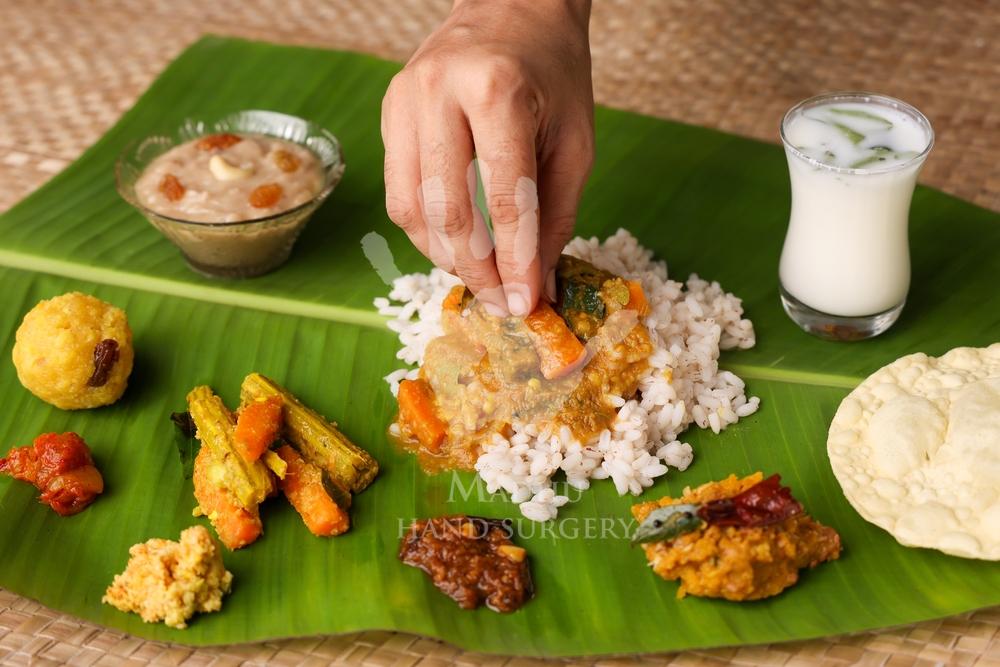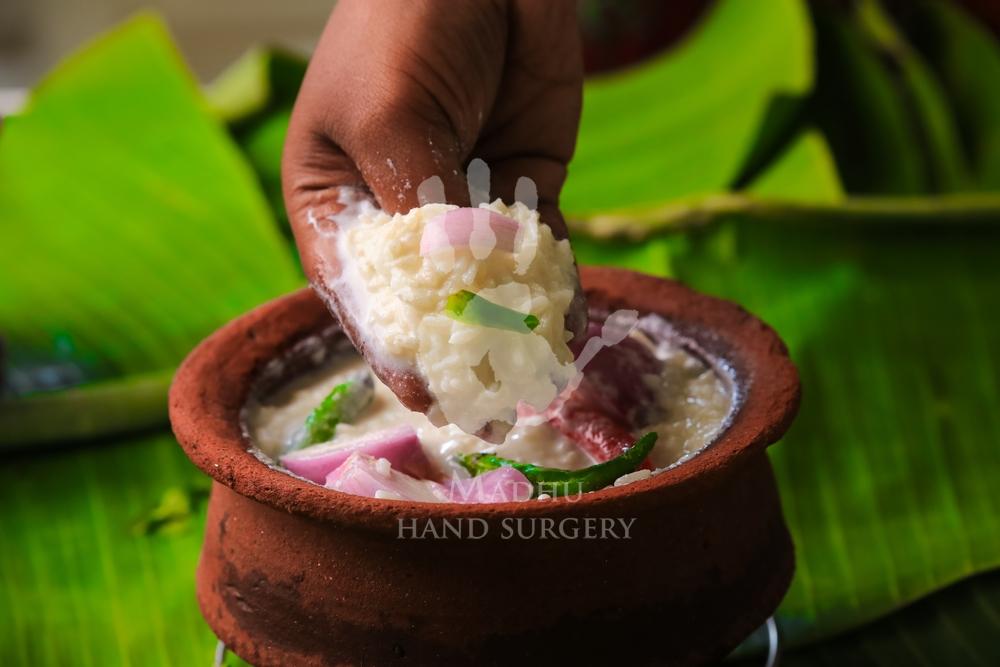
The Hand That Feeds
This blog explores the intricacies of eating in Indian culture, centered around the theme, “The Hand That Feeds.” It is written by Dr. Madhusudhan N.C., a renowned Hand, Wrist, and Microvascular Surgeon at Bangalore Baptist Hospital, who also owns the Madhu Hand Surgery & Orthopaedic Centre in Bengaluru.
Every time I treat a complex hand injury, one recurring question stands out from my patients or their loved ones: “Doctor, will I ever be able to eat with my hand again?” This simple query is not just about functionality; it carries with it the essence of our culture, tradition, and identity. In Indian culture, eating with the hand is not just a necessity—it’s an art form. It is an intricate dance of muscles, nerves, and bones, working together to create the most personal and sensory dining experience.

In Indian culture, food is not just sustenance; it’s sacred. The act of eating with hands symbolizes a connection between the body, mind, and soul. This mindful practice encourages gratitude, fostering a deeper appreciation for the nourishment provided. Ayurveda further elevates this act, teaching that each finger represents one of the five elements—earth, water, fire, air, and ether. By eating with hands, these elements come into balance, believed to enhance digestion and overall well-being.
In many households, the ritual of eating with hands begins with a small prayer or expression of gratitude, highlighting the spiritual reverence for food. Across India, each region showcases its own unique practices: forming perfect balls of rice in the South, folding rotis with precision in the North, or scooping chutneys and curries with deft movements. This diversity exemplifies the intricate motor skills our hands perform daily, often unnoticed. The complexity doesn’t end there. Indian cuisine itself demands mastery over texture—mixing soft rice with creamy curry, folding crispy dosa without breaking it, or combining contrasting flavours for the perfect bite.

Think about it. To mix the perfect morsel of rice with curry, your hand must execute precise coordination. The intrinsic muscles of the fingers, small yet powerful, come alive to scoop and mix. The thumb plays the lead role, pressing against the fingers to form the ideal bite. The palm assists by providing stability, while the wrist allows fluid movement to manoeuvre through the plate.
When it’s time to eat, the hand performs yet another feat of engineering: accumulating the food between the fingers, forming a compact bundle. The fingertips must then pick it up delicately yet firmly, maintaining just the right pressure to avoid spillage. And here’s where the artistry peaks—the push into the mouth. This isn’t merely placing food on the tongue; it’s a choreographed move, ensuring the food is delivered seamlessly, all while maintaining balance and coordination.
For many of us, this process is second nature, but for someone recovering from a severe hand injury, it’s a monumental challenge. Every muscle, every tendon, every nerve must relearn this complex series of movements. Rehabilitation is not just about restoring function; it’s about restoring a person’s ability to connect with their cultural roots. To once again enjoy the simple yet profound pleasure of eating with their own hand is, in itself, a tremendous victory.

The human hand’s brilliance lies in its astonishing balance of strength and delicacy. Consider its ability to grasp an egg—a seemingly simple act that demands extraordinary precision. Too much pressure, and the egg will crack; too little, and it slips from the fingers. This delicate equilibrium reflects the hand’s remarkable design, where sensory feedback, muscular control, and joint mobility work in seamless harmony.
In India, where food is a celebration, and eating with the hand is a deep-rooted tradition, regaining this ability is more than just physical recovery. It’s an emotional, cultural, and spiritual triumph. It reminds me, as a hand surgeon, of the incredible complexity of the human hand—27 bones, 29 joints, 48 nerves, and 123 ligaments all working in harmony to accomplish what we often take for granted.
So, the next time you sit down for a meal, resist the urge to scroll through your messages. Instead, marvel at the symphony unfolding before you—how your hand gracefully mixes, scoops, and delivers every bite. Witness the artistry, the unbelievable engineering of muscles, tendons, and nerves working in perfect harmony. For my patients who reclaim this intricate connection after an injury, it’s not just eating—it’s rediscovering the essence of life, one bite at a time.





